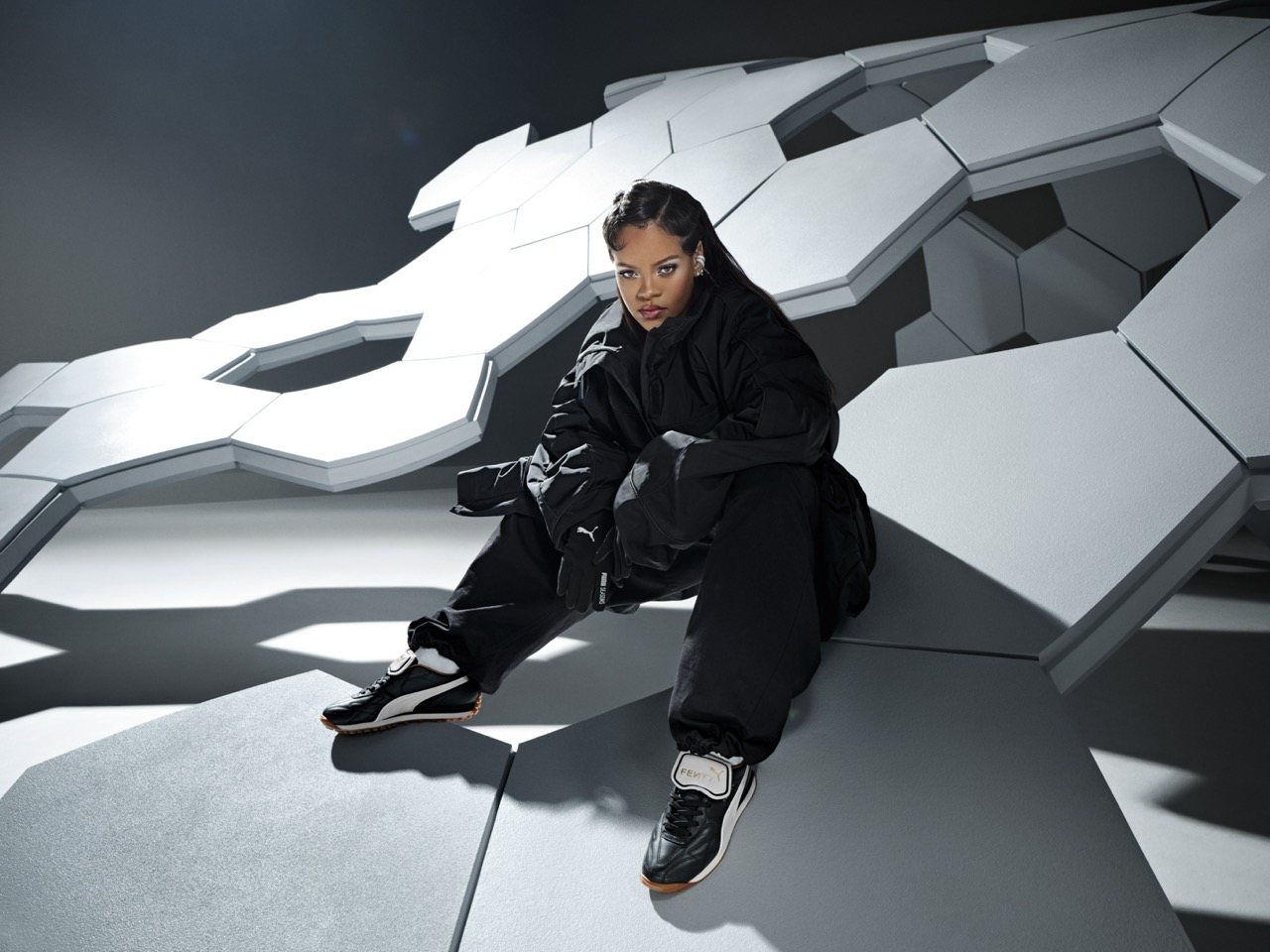The 1990s, particularly the tail end of the decade, is currently a hot topic in fashion, with the sleek minimalism that the period has since earned acclaim for now making a staunch revival on runways today. As impactful as the era’s aesthetic was, though, that’s far from the only feature of late 90s fashion culture that continues to shape the industry landscape today. Arguably, its most significant legacy is as the era that birthed the fashion collaboration, a now-vast market sector that has shaped – and continues to shape – what fashion looks and feels like today.
Indeed, while collaborations between luxury fashion labels and sports brands may now be par for the course, just before the turn of the millennium, that certainly wasn’t the case. “At the time, fashion was a very elite, exclusive space,” Heiko Desens, Global Creative Director of German sports giant Puma, says, “particularly when it came to footwear.” It’s what made the brand’s pioneering decision to partner with Jil Sander – one of the most emblematic designers – in 1998 feel like such a daring proposition. “It was something that the world hadn’t seen before, so it definitely came as a bit of a shock,” he continues.

So what was it that prompted this – at the time – seemingly unlikely overlapping of worlds and creative visions? Well, the fact that, when you take a moment to closely observe the two brands, they aren’t quite as dissimilar as you might at first think. “Authenticity, know-how, flexibility, innovation, quality” are some of the terms that Jil Sander lists, pondering Puma’s core values – indeed, much the same could be said of her eponymous brand.
It was out of a desire to develop contemporary alternatives to the classic, conservative footwear silhouettes prevalent at the time that Jil found herself drawn to sneaker culture – a kinship that was also compounded by a practical need for a shoe that adapted to the demands of a life on the go. “Talking to Jil, she’ll often tell you that her intention was actually quite selfish,” Heiko says. “Her drive was really to create a comfortable shoe that served her lifestyle as a fashion professional, with all its travel and hectic schedules.”

“My wish was to interpret the casual look of a sneaker in a high-class way,” Jil shares, “using real leather since I had fallen in love with the super soft leather of boxing boots. Thus, I approached Puma with my idea, we started to dream.” Taking cues from two of Puma’s most iconic shoes – the King, the football boot famously sported by Brazilian football legend Pelé, and the Easy Rider, its signature jogging shoes – the result of their combined brainpower was the Jil Sander King. A sleek, unisex sneaker with a vulcanised sole, it harmonised the understated chic of Jil’s signature aesthetic with a sporty dynamism.
Initially produced in limited edition and distributed exclusively through Jil Sander’s network of stores, the shoe quickly gained cult appeal – and an eager audience to match. The Jil Sander King had opened a whole new swathe of the market, introducing a rare casualness to a high fashion audience. “As a product, a sneaker is so accessible, as it really serves a holistic lifestyle,” Heiko says. “As such, the shoe really brought a fashion aspect to a 24 hour, 365 days a year lifestyle. It wasn’t just about an event or an occasion, it really integrated fashion into people’s lives.”

Granted, there were many people who wanted to integrate the Jil Sander King into their lives; many more than there were shoes available. Accordingly, the shoe was integrated into Puma’s lexicon and further developed to birth what has now become one of its most emblematic product franchises: the Puma King Avanti.
Immediately recognisable on account of its striking quilting and football boot detailing, the original intention behind the Avanti King’s development was to take the hallmark features of the Jil Sander King, and extend its legacy through the creation of an even more accessible product. In time, it’s gone on to become what Heiko describes as one of Puma’s “true icons”, a fact well attested by the recent reinterpretation of the shoe by way of a collaboration with Rihanna’s Fenty – yes, we challenge you to come up with a more iconic pairing!
In any case, the fact that, of all Puma’s sneakers, Rihanna’s well-trained eye was directly drawn to the King Avanti speaks measures of the continued relevance of the look Jil pioneered with her original collaboration with the brand, and the enduring power of its legacy to this day. Beyond aesthetics, though, its influence continues to reverberate across the infrastructure of the contemporary fashion industry. “In the middle of the nineties, we were the first to conceive of a luxury sneaker,” Jil says, assessing the seismic impact of the sneaker she designed. “We opened the door to customisation, limited editions, glamour sneakers. It was the logical next step for the sports industry.” “If you look back, there are only a handful of truly revolutionary fashion moments, and I’d say that this is probably one of the most impactful, both creatively and commercially,” Heiko concurs. “At one end, it really encouraged sports brands to be so much more adventurous and daring in their design, but it also encouraged fashion brands to be a little more accessible, and less exclusive,” paving the way for the comparatively democratised fashion landscape we know today.

Discover the Fenty x Puma Avanti here.
Credits
Images courtesy of Puma
